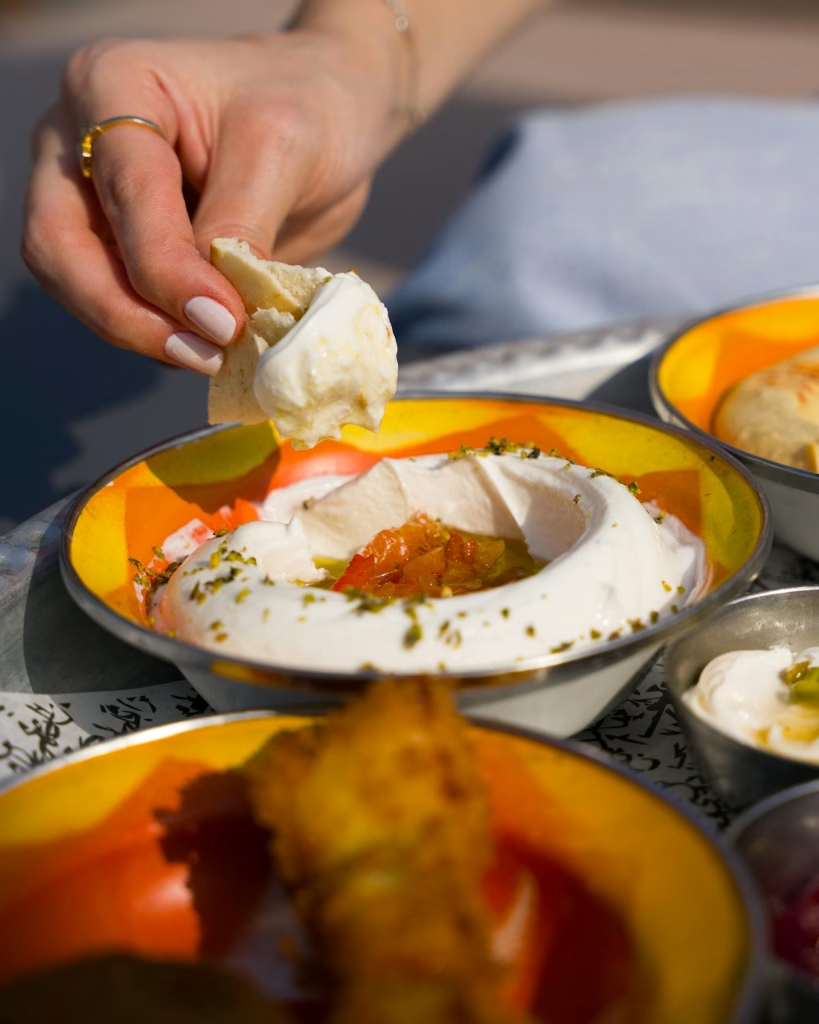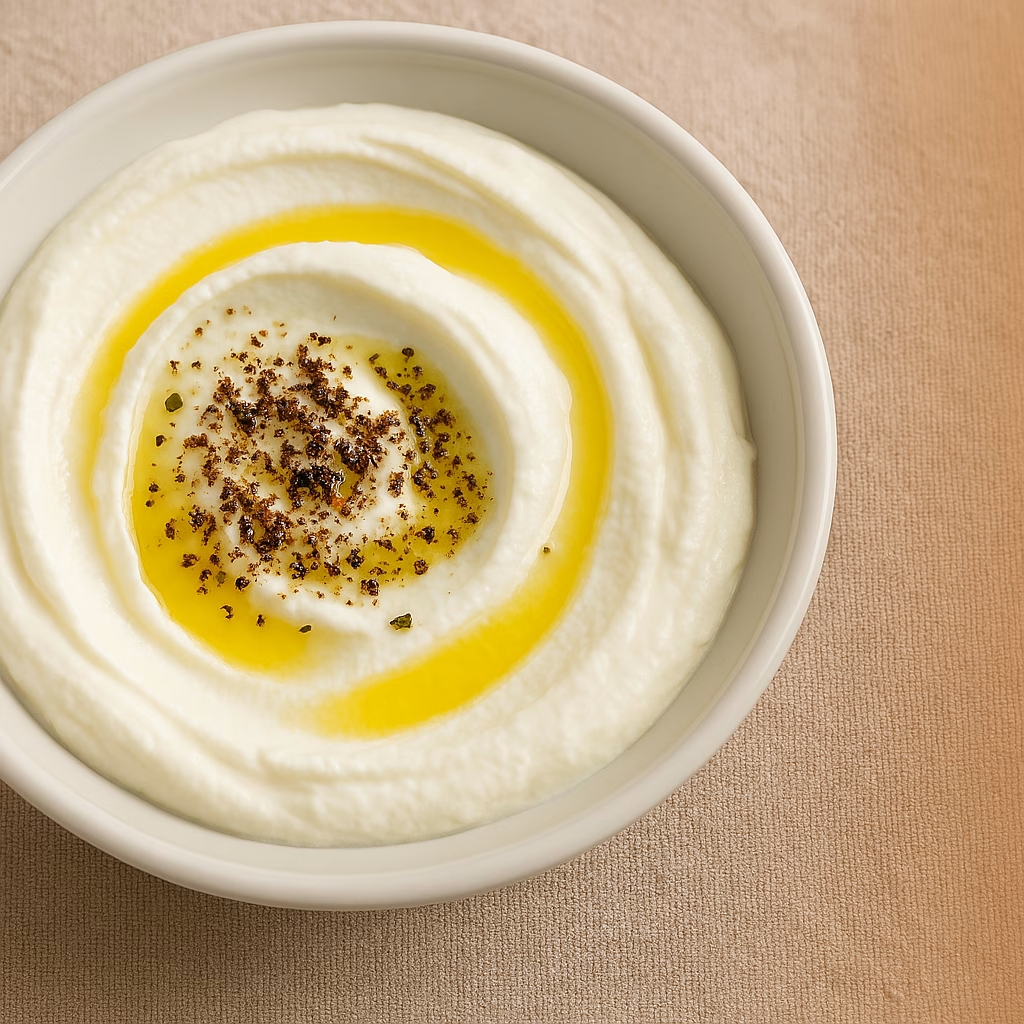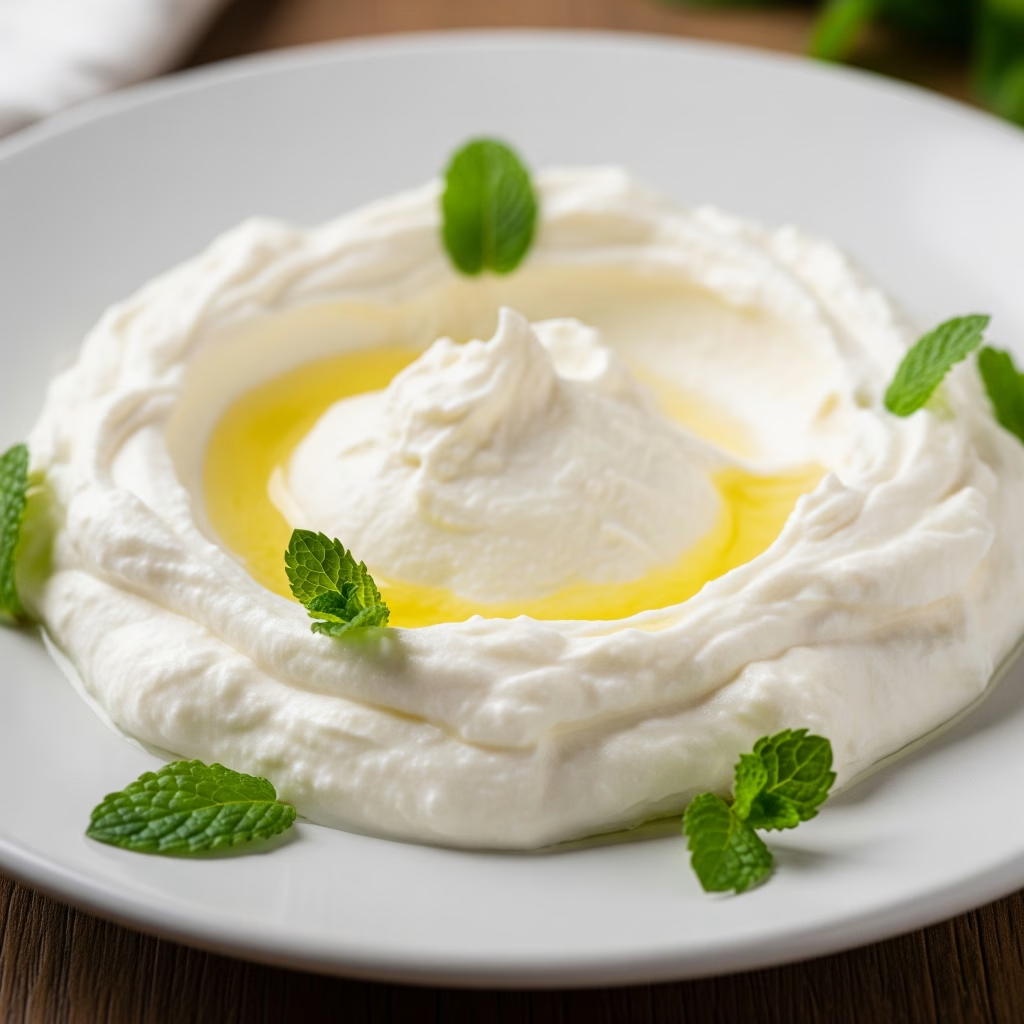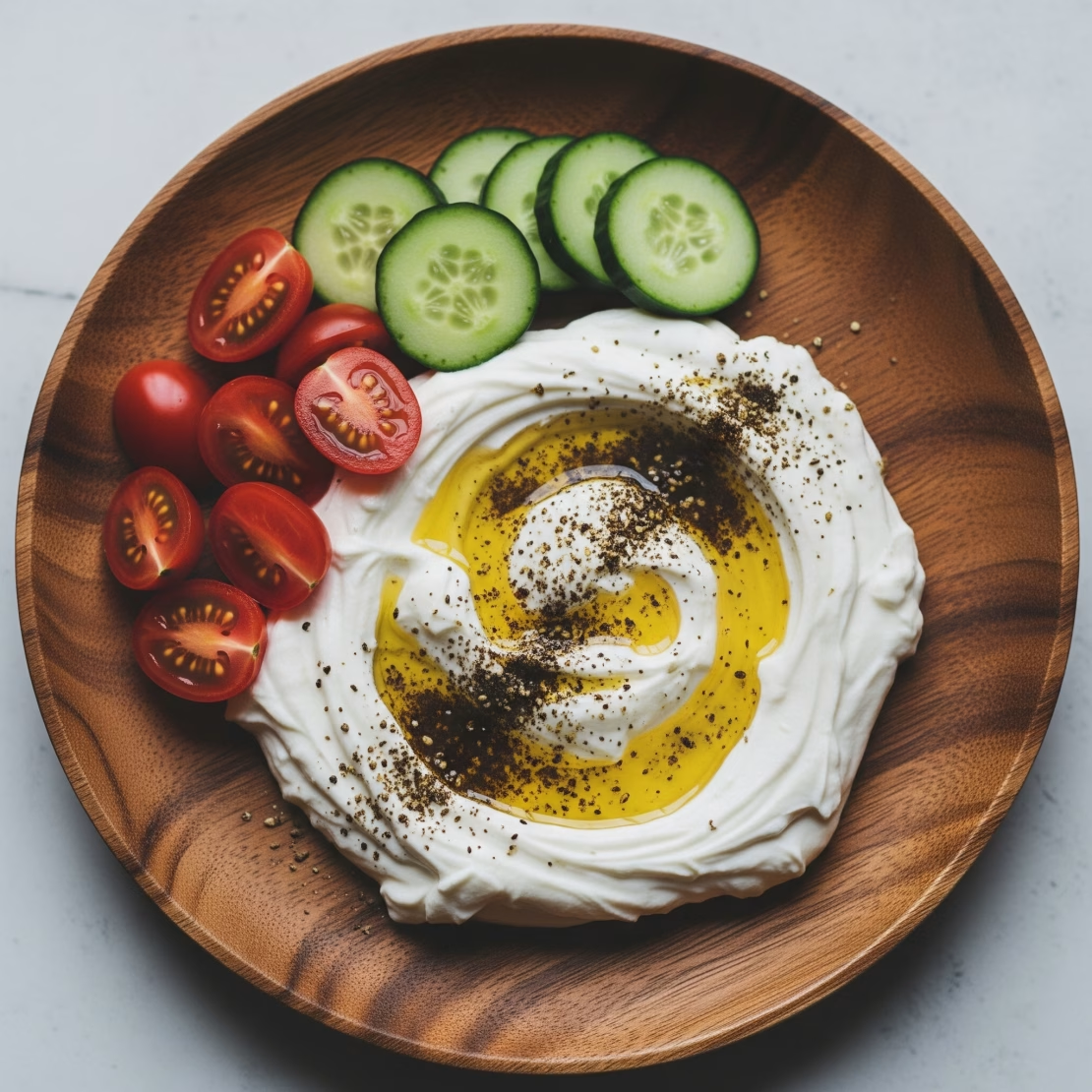Labneh, a creamy and tangy yogurt cheese, is a staple in Middle Eastern cuisine that has been enjoyed for centuries.
Known for its rich flavor and smooth texture, Labneh is incredibly versatile; it can be used as a dip, spread, or even formed into small cheese balls. The beauty of this dish lies in its simplicity; with just two main ingredients, yogurt and salt, you can create a delicious and nutritious treat.
In this guide, we will take you through the process of making Labneh from scratch, share expert tips, and explore creative variations to elevate its taste.
Table of Contents
A Detailed Guide to Making Creamy Middle Eastern Yogurt Cheese
Ingredients
Serves: 4-6
- 1 liter (4 cups) full-fat plain yogurt (preferably homemade or high-quality store-bought)
- 1 teaspoon salt (adjust to taste)
- Cheesecloth or a fine-mesh strainer
- Kitchen twine (if using a cheesecloth)
- Olive oil (for serving, optional)
- Za’atar, sumac, or dried mint (for garnish, optional)
Step-by-Step Instructions
1. Preparing the Yogurt
Start with a high-quality, full-fat plain yogurt. Greek yogurt can be used for a thicker consistency, but traditional Labneh is made from regular yogurt.
2. Mixing with Salt
In a mixing bowl, add 1 teaspoon of salt to the yogurt and stir thoroughly. The salt helps to draw out excess moisture and enhances the flavor.
3. Straining the Yogurt
- Place a large fine-mesh strainer over a deep bowl.
- Line the strainer with a double layer of cheesecloth or a clean muslin cloth.
- Pour the salted yogurt into the cheesecloth.
- Gather the edges of the cheesecloth and tie them together with kitchen twine to form a pouch.
4. Draining the Excess Liquid
- Hang the cheesecloth pouch over a bowl or place it in the strainer, ensuring that there is enough room for the whey to drain without the Labneh sitting in it.
- Refrigerate for 12-24 hours, depending on the desired consistency. The longer it strains, the thicker it will be.
5. Checking the Consistency
- After 12 hours, it will have a creamy, spreadable consistency (perfect for dipping).
- After 24 hours, it will be firmer and suitable for rolling into balls.
6. Transferring and Storing
- Once the Labneh reaches the desired consistency, remove it from the cheesecloth and transfer it into an airtight container.
- Store in the refrigerator for up to a week.

Serving Suggestions
- Classic Serving: Drizzle with extra virgin olive oil and sprinkle with za’atar, sumac, or dried mint.
- With Bread: Serve with fresh pita bread, lavash, or crackers.
- As a Spread: Spread on toast, sandwiches, or bagels.
- Dipping Platter: Pair with cucumbers, cherry tomatoes, and olives.
- Labneh Balls: Shape into small balls, coat in herbs, and store in olive oil.
- With Honey & Nuts: Drizzle with honey and add crushed walnuts or pistachios for a sweet variation.
Tips for Perfect Labneh
- Use Full-Fat Yogurt: Low-fat versions will not yield a rich, creamy texture.
- Strain Longer for Firmer Labneh: If you want a thicker consistency for rolling into balls, strain for at least 24 hours.
- Flavor Infusion: Mix in garlic, lemon zest, or herbs before straining for added taste.
- Keep the Whey: The drained liquid (whey) can be used in smoothies, baking, or soups.
- Storage Tip: If making Labneh balls, submerge them in olive oil for extended shelf life.
Healthier Alternatives
- Low-Fat Labneh: Use low-fat yogurt for a lighter version, though it may be less creamy.
- Vegan Labneh: Substitute with plant-based yogurt (such as cashew or coconut yogurt) and follow the same process.
- Probiotic Boost: Use homemade yogurt with live cultures for added gut health benefits.
- Low-Sodium Option: Reduce the amount of salt or use Himalayan pink salt.
Creative Variations
- Spiced Labneh: Mix in chili flakes, black pepper, or cumin for a spicy kick.
- Herbed Labneh: Blend with fresh herbs like dill, parsley, or basil.
- Nutty Labneh: Add chopped nuts like almonds or walnuts for texture.
- Fruit Labneh: Sweeten with honey and top with figs, dates, or pomegranate seeds.
- Labneh Dip: Blend with roasted garlic and lemon juice for a tangy dip.

Common Mistakes to Avoid
- Using Sweetened Yogurt: Always use plain, unsweetened yogurt.
- Skipping the Salt: Salt is essential for flavor and proper straining.
- Not Straining Long Enough: A short straining time results in a runny texture.
- Overcrowding the Strainer: Use a large enough strainer to allow proper drainage.
- Discarding the Whey: Whey is nutritious and can be reused.
History of Labneh
A Middle Eastern Staple
Labneh, also known as strained yogurt or yogurt cheese, has been a staple in Middle Eastern and Mediterranean cuisine for centuries. The practice of straining yogurt dates back thousands of years, originating in the Levant region (modern-day Lebanon, Syria, Jordan, and Palestine), where dairy preservation was essential due to the hot climate.

Culinary and Cultural Significance
Traditionally, Labneh was made by nomadic and rural communities to prolong the shelf life of yogurt. It was often formed into small balls, dried, and stored in olive oil for extended periods. Over time, it became a beloved component of mezze platters, breakfast spreads, and everyday meals in Middle Eastern households.
Modern Popularity
With the rise of Mediterranean and Middle Eastern cuisine worldwide, Labneh has gained international recognition. It is now found in gourmet grocery stores and served in upscale restaurants, often paired with artisanal bread, infused oils, and exotic spices.
FAQs about Labneh
- Is Labneh the same as Greek yogurt?
- No, Greek yogurt is strained but still has some whey, whereas Labneh is thicker and more like a soft cheese.
- Can I make Labneh with non-dairy yogurt?
- Yes, plant-based yogurts like almond, coconut, or cashew work well.
- How long does Labneh last?
- It stays fresh in the fridge for up to a week. If stored in olive oil, it can last longer.
- What does Labneh taste like?
- It has a tangy, creamy taste, similar to cream cheese but with a yogurt-like freshness.
- Can I freeze Labneh?
- Freezing is not recommended as it alters the texture.
- Why is my Labneh too runny?
- It likely hasn’t been strained long enough. Extend the straining time.
- What can I do with leftover whey?
- Use it in smoothies, soups, or baking for extra protein.
- Can I use flavored yogurt?
- No, always use plain yogurt for authentic Labneh.
- Is Labneh good for weight loss?
- Yes, it’s high in protein and probiotics, making it a healthy addition to a balanced diet.
- What dishes pair well with Labneh?
- It complements Mediterranean dishes, grilled meats, and fresh vegetables.
Labneh is a versatile, delicious, and healthy addition to any kitchen. Whether enjoyed as a spread, dip, or part of a Mediterranean feast, it is easy to make and customizable to suit different tastes. With its rich history, probiotic benefits, and creamy texture, Labneh is a must-try for anyone who loves Middle Eastern cuisine. So grab some yogurt, start straining, and enjoy the delightful flavors of homemade Labneh!


